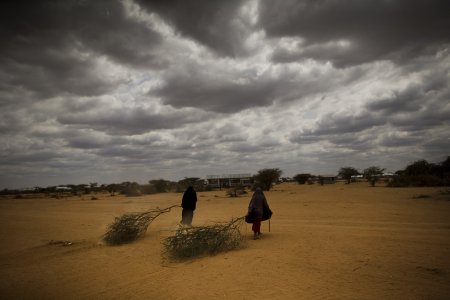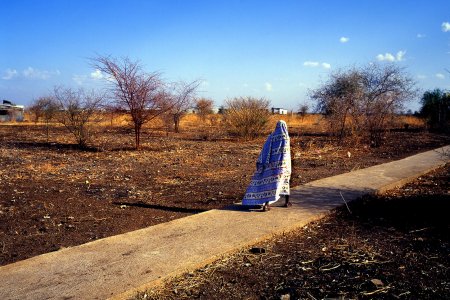
Humanitarianism in the Modern World. The moral economy of famine relief
Michaël Neuman
“Humanitarianism in the Modern World. The moral economy of famine relief” published by Cambridge University Press, is an open access bookhttps://www.cambridge.org/core/books/humanitarianism-in-the-modern-world/C6088FA7DCED5F628718D56AEB984AFA written by a team of three people, whose aim is to provide a history of contemporary humanitarianism through the prism of famines. Norbert Götz, Georgina Brewis and Steffen Werther are treading on fertile ground, as the number of publications on the history of humanitarianism has multiplied in recent years. However, the contribution they present here is rich and original.
By examining three famine situations through the lens of the concept of moral economyMoral economy is a concept by the British historian and Marxist E.P. Thompson, which is used in historiography, political and social sciences. It refers to a set of political, sub-political and cultural community practices and values that aim at defending the interests of the community, including economic interests. In the book, the authors approach the concept of moral economy in the context of an analysis aimed at observing the relief efforts of socio-economic actors in rich countries in the face of famine situations., the three historians study the black box of relief operations. They look at alert and appeal mechanisms, allocation policies and accountability policies based on three situations: the response to the famine in Ireland in the mid-19th century, the response to the consequences of the famine in Russia from 1921 to 1923, and the considerable relief operation in Ethiopia from 1984 to 1986. Here, the authors are interested in famine as an example of a humanitarian cause of action. The nature of the event itself is therefore not central to the analysis they offer.
The first thing this book illustrates is that the anhistoricism of humanitarian practitioners, largely observed in the sector, and mentioned by the three historians in their conclusion, is particularly misplaced. Indeed, by looking at the three crises, the oldest of which is almost two centuries old, it is possible to measure the legacy that contemporary humanitarianism owes to them, both in terms of ideas and techniques. The authors describe practices for collecting and reporting on the performance of organizations and for selecting priority victims which date back to the world before Henry Dunant (1828-1910) and the major crises of the second half of the 20th century.
The case studies allow the authors to give shape to a chronology of contemporary humanitarianism which is rooted in the evolution of the sector rather than in the evolution of the world and the crises which affect it. First, an era embodied here by the Irish episode of ad hoc humanitarianism, marked by brief interventions and organizations set up for the specific purpose of relief; followed by the beginnings of organized humanitarianism observed in the response to the Russian famine, relying on a nascent bureaucracy; and finally, the era that would still be ours today embodied by the Ethiopian case of expressive humanitarianism, established in particular by a massive recourse to mass media and a strong link with the neo-liberal triumph.
The exhibition of the mechanisms for calling or alerting relief workers allows us to see how systems of interpellation are created through iconography and testimony. The authors note that children soon became ideal victims, allowing, in the Russian example, to overcome political, religious and ethnic apprehensions. Furthermore, organizations wanted to make disasters into primarily natural events in order to avoid the disruption that would be caused by highlighting their human origins.
They also show us the intense discussions about the competition between remote and 'domestic' victims in the context of warnings. On what grounds should we act? Today, as in the past, people also act for themselves, for the salvation of their soul or the greatness of their country, their church, etc. International solidarity also takes the guise of internal security - this was the case in the face of the communist threat in 1921, as it is today in the articulation between development and security programs, or in the context of responses to the HIV or Ebola epidemics.
Impartiality is thus called into question, and with it, attempts to objectivize needsOn this subject, see Joël Glasman’s article on our website : https://www.msf-crash.org/en/publications/invention-impartiality-history-humanitarian-principle-legal-strategic-and-algorithmic: appeals built on an objective basis and statistics would be less successful than those built on the individual experiences of people in difficulty.
In examining the question of allocation, the three authors continue their reflection on the prioritization of actions. Once again, we come across a number of questions which run through contemporary humanitarian work. How can resources be allocated when they are inevitably insufficient to cover needs? Who are the victims who deserve to be helped? How do relief actors navigate between short-term (emergency) and long-term (whether called rehabilitation or development) objectives? What debates are there about prioritizing particular populations, particularly on religious grounds? What is media attention’s weight in the decision to act? How does the issue of neutrality, or more concretely, the potential material contribution of aid to a party in conflict, arise? These questions and the answers given to them by the relief organizations involved in Ireland, Russia and Ethiopia give way to political reasoning and controversy.
Finally, the authors analyze the issue of accountability in detail, both in terms of the media coverage of activities and the accounting of relief activities. The reader is thus invited to note the evolution of accountability operations from somewhat dry accounting reports to a more attractive mode of publication, aimed at increasing the visibility of relief efforts, so much so that sometimes the visibility of aid is considered more important than the results themselves. Perhaps unexpectedly, given the constant contemporary calls for accountability, the authors argue that the era of expressive humanitarianism is generally marked by less transparency than its more distant ancestors. The account also captures the debates about the use of humanitarian aid by political and military actors and places the question of aid diversion at its centre, particularly in the Russian and Ethiopian cases, again highly contemporary issues.
"Humanitarianism in the Modern World. The moral economy of famine relief" is a valuable historical survey: not only does it add to the knowledge of situations that have been studied elsewhere, but the use of the "moral economy" grid allows the authors to effectively penetrate the elaboration of the organizations’ choices. Despite the complexity of some of the topics studied, I recommend it to all practitioners and the general public interested in humanitarian aid.
To cite this content :
Michaël Neuman, “Humanitarianism in the Modern World. The moral economy of famine relief”, 1 juillet 2021, URL : https://msf-crash.org/en/blog/humanitarian-actors-and-practices/humanitarianism-modern-world-moral-economy-famine-relief
If you would like to comment on this article, you can find us on social media or contact us here:
Contribute



Add new comment